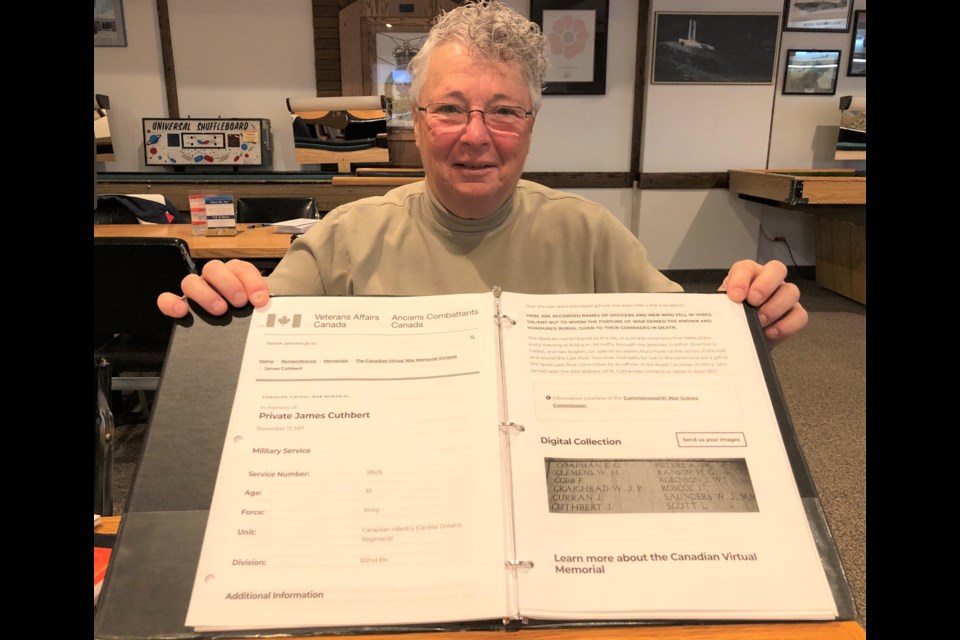Sue Knox’s quest to learn about relatives who served in the First World War turned into a project to honour every service member from the area who died during both world wars.
Knox began conducting research several years ago and found that four uncles had served in the First World War. Three returned from the bloody battlefields of Western Europe, while a fourth was killed in action and buried overseas.
When the COVID-19 pandemic hit in March 2020 and shut down society, Knox had the time and opportunity to further her research. Since she is a former military member, she had access to federal databases and looked up information about soldiers, sailors and airmen from the area who fought and died.
“Because of my association with the (Royal Canadian Legion Branch No. 59), I thought it would be a neat idea to memorialize all the men and women from Moose Jaw who gave their lives and fought in support of our country and do something with it,” she said. “Because most of them have been long forgotten.”
Knox first started researching the personnel who served in the First World War, which occurred from 1914-18. Branch No. 59 has a book from that time listing the area soldiers who died, which was put together by women who recorded the deaths as they came in.
Through other sources, Knox found names of more men who fought and died and weren’t listed in the book.
“It was kind of a bee in my bonnet, I guess. It grew into something that I didn’t expect, but it was very interesting to do … ,” she said.
“If we can do something to bring that (remembrance) back into the forefront by identifying individuals who still have family in the local area, I think it would be an honour to that family to have that done.”
These families can also better inform their kids, grandkids and great-grandkids about these relatives and help make remembrance more concrete, she added.
Knox eventually compiled a list of about 180 area men who died in the First World War into one binder. Meanwhile, she identified more than 300 area residents who died in the Second World War, either overseas or while training in Saskatchewan; that material is in three binders.
The pages contain information about where the men lived, where they served, their unit, their injuries, and where they are buried. Even though Knox is not a historian, she is still interested in military history, so learning about the men’s histories was exciting.
Many men — originally from Europe — worked on farms and decided that life wasn’t for them, so they went off to war, she said. Most thought they would be there for six months and then return home, but that wasn’t the case.
Meanwhile, boys too young to fight managed to sneak overseas, hoping to see action. However, they were kept in England until they turned 18 before being sent to the front.
Knox travelled overseas in 2017 to attend a 100th-anniversary event honouring the Battle of Vimy Ridge. She also visited 40 war cemeteries in 10 days, which she found humbling.
After returning, she walked through both of Moose Jaw’s cemeteries, looking for old graves that might not have been marked with veterans’ headstones. She maintained them as part of Decoration Day in June and Remembrance Day in November, so she was familiar with most veterans’ graves.
Over the years, several families have said their relatives did not receive flags during Decoration Day. However, Knox pointed out that the legion can’t mark plots if it doesn’t know about them. That is why the public’s help is important in identifying gravesites, especially in old family plots.
During the past year alone, Knox has found 30 unmarked veterans’ graves and added them to her list. She is now working with the city hall to identify other graves and is collaborating with the Last Post Fund to acquire headstones.
Using Knox’s research, the Moose Jaw Express/MooseJawToday.com plans to feature some men in upcoming editions and on the website leading up to Remembrance Day.



